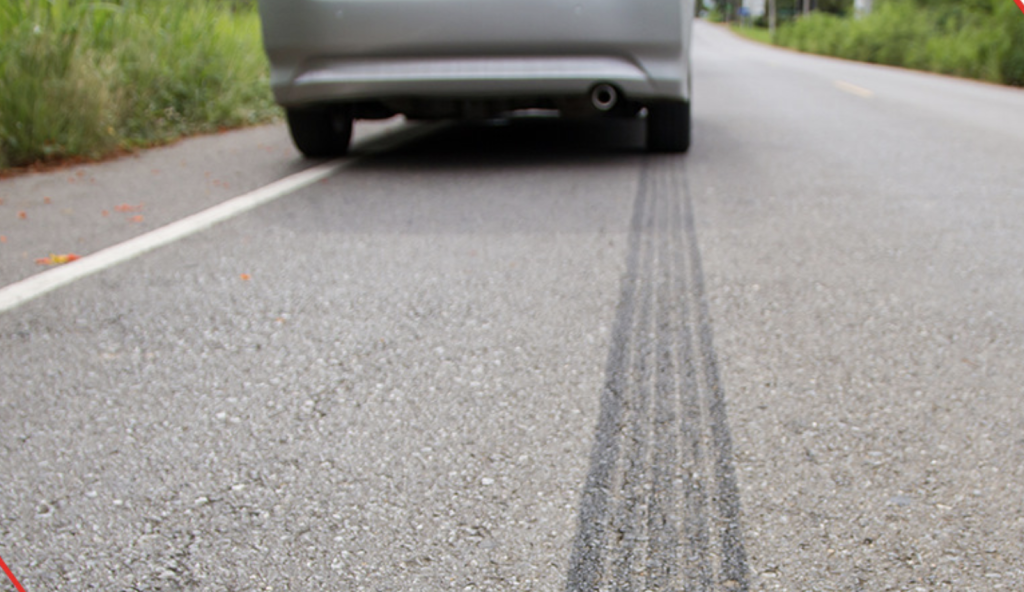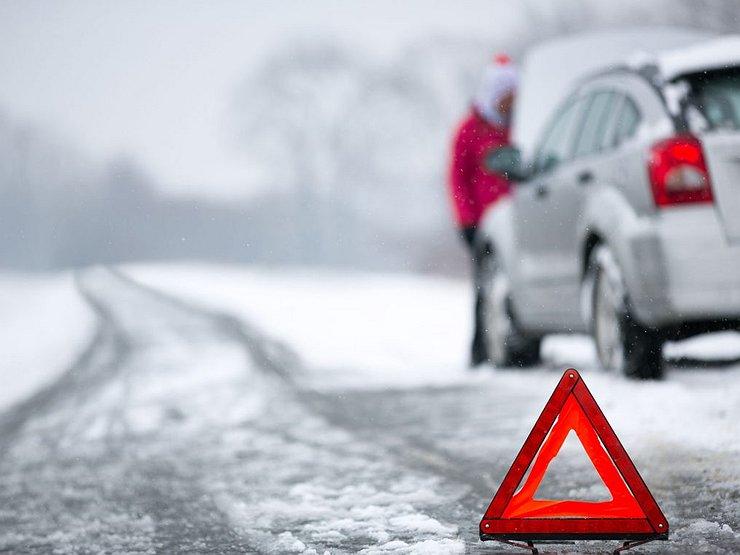
Uneven braking
Content
Uneven vehicle braking is a dangerous phenomenon that can lead to loss of vehicle control, especially at high speeds and on slippery roads. To protect yourself - let's look at the possible causes of uneven braking and also find out how to correct the situation and fix the problem.
To begin with, you need to figure out exactly how the braking system works in order to understand the possible causes of such a violation.
How to check uneven braking?
If you are not a very experienced driver and are not sure if braking is even, one of the easiest options is to check everything with a simple experiment.
- Go to a long, empty stretch of level road (such as an airfield or training ground)
- Accelerate the car to a speed of 50-60 km/h
- And try to make emergency braking (that is, the brake pedal to the floor)
- After a complete stop of the car - inspect the traces of braking.

If you see uniform (identical) brake marks from all four wheels, then everything is not so bad. But if there is a clear black mark from some wheels, and not a single trace from one, the problem is on the face. The second symptom will be the braking trajectory - if the car was moving straight during braking, this is the norm. But if the car moved to the right or to the left, this is the result of uneven braking. To be sure, check the thickness of the brake pads. A difference of more than 0,5 mm will indicate uneven braking.
Possible causes of uneven braking
There are several main causes of uneven braking, here are the main ones:
- Getting oil on the pads / discs;
- Violation of the angles of the wheels - disappears;
- Clogging of the tube leading to the cylinder;
- Debris or foreign fluids entering the brake fluid;
- Air in the system;
- Different pressure in tires;
- Leaking brake fluid;
- Jamming of the piston of the brake cylinder (does not go back and forth).

How to fix uneven braking
First, check the wear on the brake discs and drums. If they changed a very long time - the reason may be in them, but if the disks are “fresh”, we go further down the list. Secondly, it is worth checking whether the brake cylinders are out of order, whether there is a move and whether there is a wedge.
A non-trivial cause may be the curvature of the brake discs. Poor quality discs or brake pads with prolonged use of the brake system can overheat the brake disc, which can lose its geometry, especially during sudden cooling (for example, a large puddle) - which will eventually lead to uneven braking. The solution in this case is one and not cheap - replacing the brake discs.
Other causes of uneven braking from the list above do not need to be described in detail. Check all the points in turn and if a problem is identified, fix it. Be sure to re-test to make sure uneven braking does not reoccur.
Additional Causes of Brake System Failures
Brake pad wear
Change the brake pads regularly according to mileage and use, do not wear them to the ground to save money. Damaged brake discs are much more expensive. It is worth noting that uneven wear of the brake pads can cause uneven braking. A characteristic sign of such a malfunction is a decrease in the level of brake fluid in the expansion tank, as well as a creak and rattle during braking. This clearly hints that the pads require urgent replacement.
Wear of brake discs and drums
Everything is exactly the same as about the pads. The disc can survive 2 or 3 sets of brake pads, but then it will also need to be replaced. Don't neglect your safety.
Leaks in the hydraulic line
Depressurization of the brake line can lead not only to uneven braking, but also to the absence of braking as such. Such a breakdown is one of the most dangerous. It manifests itself simply - when you press the brake pedal - it goes to the floor with almost no resistance. In this case, the car almost does not slow down. If this happens to you, stop immediately using the engine brake or mechanical parking brake and be as careful as possible. Locate the leak and replace the damaged tube or hose, then bleed the system.
Wear and jamming of the caliper guides, misalignment of the brake cylinder
Often this wedging is the root cause of uneven pad and disc wear, resulting in uneven braking.
Deformation of brake discs
About violation of geometry brake discs we have already written. One has only to add that driving along mountain serpentines can be an additional risk factor, where an inexperienced driver can easily overheat the brake discs.
Low level of brake fluid in the system
One of the least unpleasant causes of malfunctions in the brake system. It is eliminated very simply - add brake fluid to the expansion tank. Identifying the problem is also simple - look at the dashboard - a red signal will be on there, indicating the need to add fluid.
Broken or kinked brake lines
The name speaks for itself. In this case, it is worth replacing the hose with a new and correct configuration. Remember to bleed the brakes and add brake fluid to the correct level.
Parking brake lever not released
The most banal but at the same time very common cause of incorrect operation of the brake system, including uneven braking, is driving with the brakes on. parking brake.

